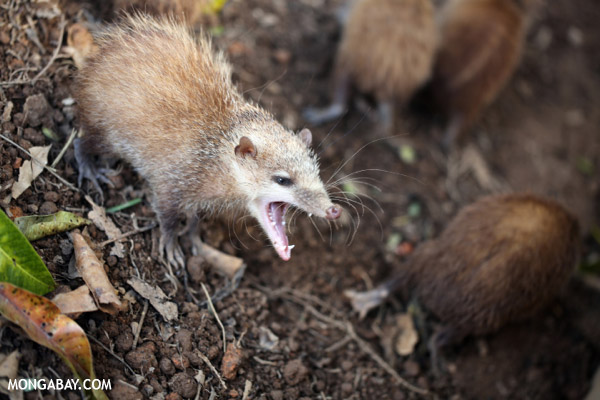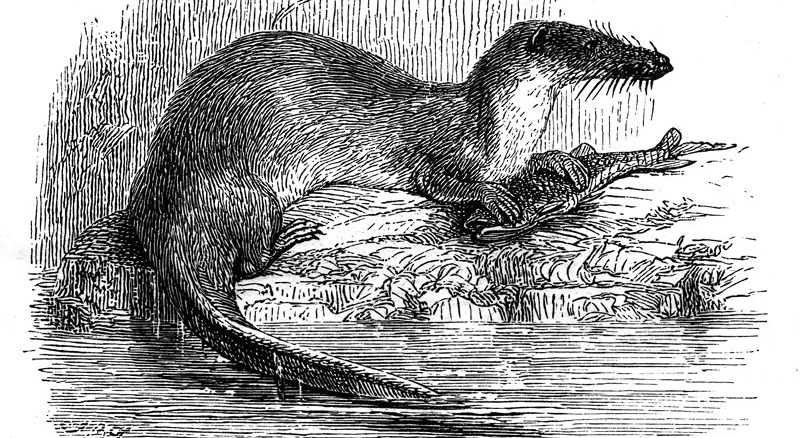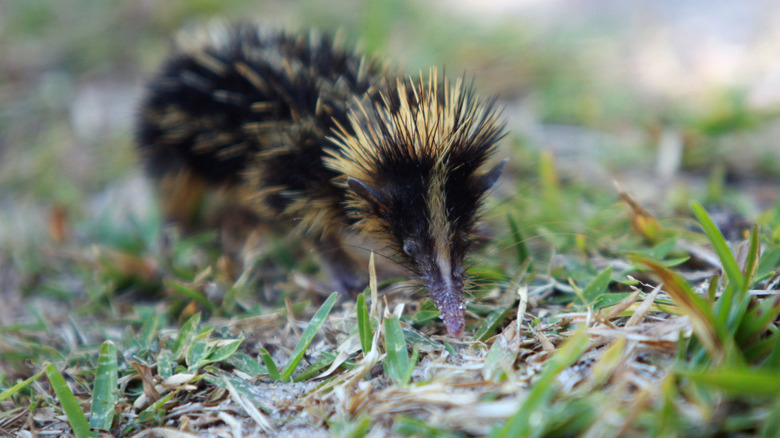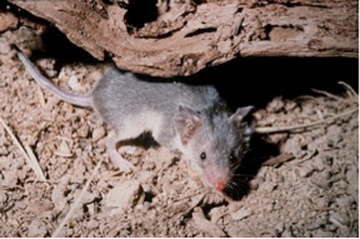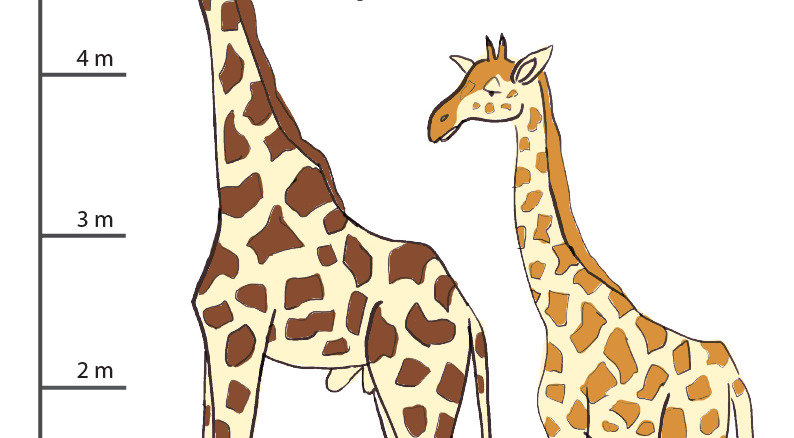By David Brown
A terrifying force moves through the Amazon rainforest, tearing down trees and all other barriers in its path.

Animals flee. Even jaguars, the apex predator of the jungle, run away as fast as they can. Flocks of parrots and a rainbow of screeching songbirds dart from the trees. Spider monkeys jump from branch to branch, as fast as their limbs and prehensile tail will carry them.
Humans also run in terror, emptying remote villages along the river, as the destructive force bears down upon them.
And the force that has all the residents of the jungle trembling and racing in fear?
ARMY ANTS!
This is the view of army ants from books and movies. In the 1954 adventure movie “The Naked Jungle,” people fight the marabunta (a Spanish word for a plague of army ants) that are invading villages and farms in the Amazon rainforest.
From fiction to fact
Real army ants are much less scary, but even more interesting than the movie monsters they inspire.
1. Army ants don’t hunt humans
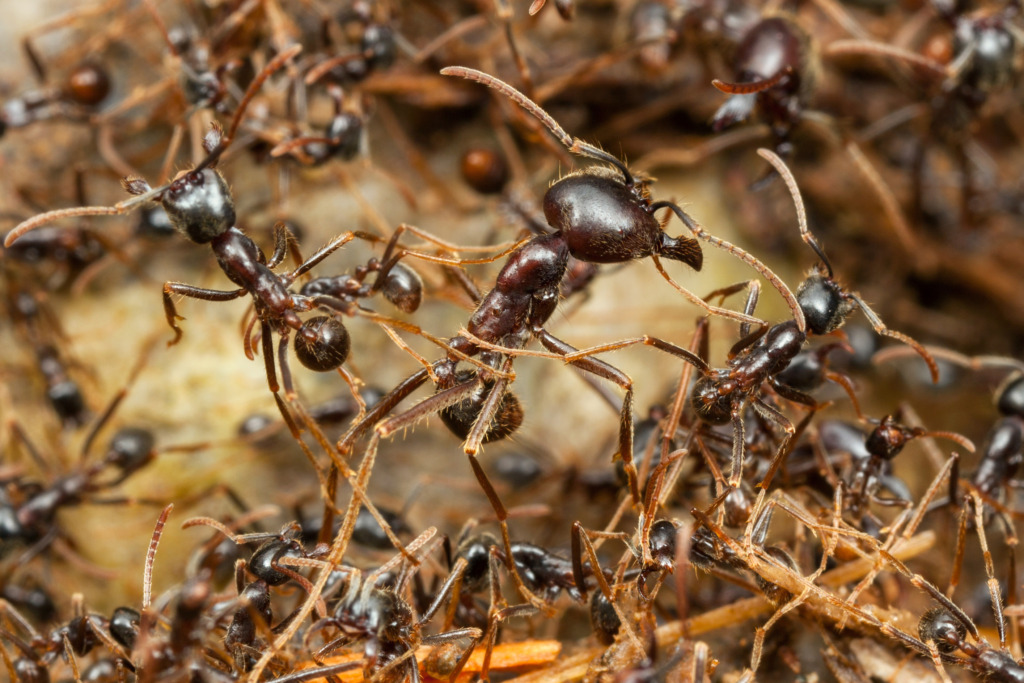
Army ants in movies like “Indiana Jones and the Kingdom of the Crystal Skull” hunt humans. In real life, army ants are fierce predators and a deadly threat … if you are the size of a grasshopper or termite.
Real army ants mostly eat other insects and invertebrates. They are not capable of taking down a large vertebrate animal that is moving away from them.
Animals that cannot move away from army ants, like baby birds, beetles, other ant species, or even scorpions and spiders, could become army ant meals.
2. There are 200 types of army ants

Eciton burchellii is an ant species that lives in the rainforests of South and Central America. It is one of about 200 army ant species found worldwide. E. burchellii ants live in colonies with a queen, worker ants, and soldier ants. The soldier ants have large heads with sharp mandibles for attacking and slicing up prey. It’s the soldier ants that give army ants their fearsome reputation.
An E. burchellii colony has hundreds of thousands of worker and soldier ants and a single queen who lays millions of eggs in her lifetime.
3. Army ant colonies move around
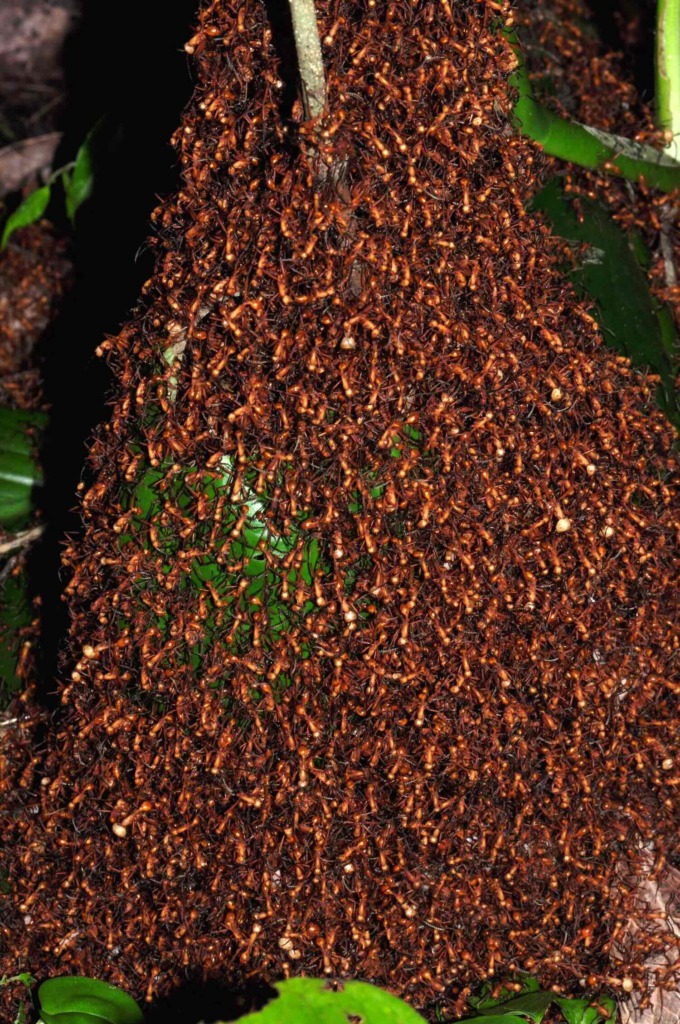
Army ants like the E. burchellii do not have a fixed home like most other ant species. They are always on the move, which also contributes to their fearsome reputation.
For about 20 days, the colony will stay in one area while the queen lays her eggs. Soldiers and workers go out and raid the local area every few days to catch food for the queen and the workers attending the eggs. The army ant colony can eat tens of thousands of prey animals per day!
After the egg-laying cycle, the whole colony moves to a new location in the forest. For 15 days, the ants become an invading army. Long trails of workers and soldiers swarm, looking for any food items that stray into their path.
The ants surround their prey and bite it fiercely until it dies. They slice it apart and carry it to the hungry brood of baby ants that hatch from the eggs the queen laid.
E. burchellii do not build a physical nest, but form a nest from the hundreds of thousands of individuals in the colony. This living nest is called a bivouac.
4. Army ants keep prey in check and help the rainforest stay healthy
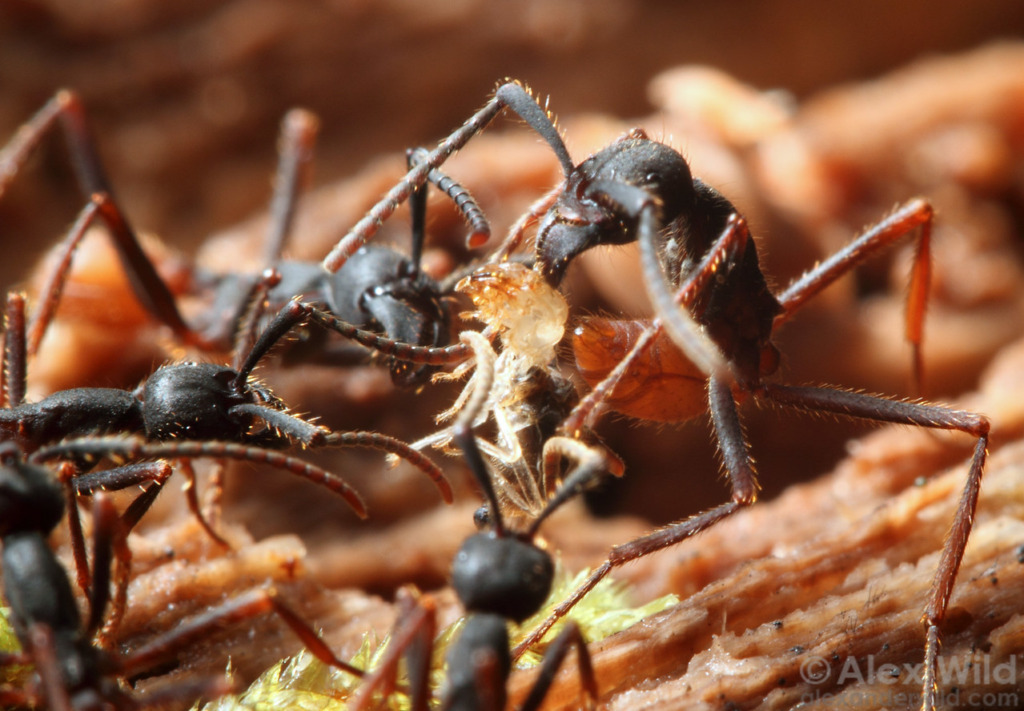
Army ants like the Eciton burchellii are considered to be keystone species, members of their rainforest ecosystems that play important ecological roles. Army ants are major predators among arthropod species: insects, spiders, and their relatives. By hunting and reducing prey numbers, army ants stop their prey species from dominating the ecosystem.
Army ants create a lot of leftovers when they bring food back from their raiding patrols. These refuse piles are full of pieces of beetles, worms, and every other creature the ants feed to their hungry baby ants. The refuse piles are important food sources for many species of insects and other animals — army ant leftovers feed an ecological army themselves!
5. Some animals are attracted to army ants

In movies, all the animals in the path of army ants run away from them. But in real life, the exact opposite happens. Many birds, lizards, and other animals follow the army ants and eat the insects and other prey running from the ants. An entire group of birds, called antbirds, is adapted to following army ants to eat what escapes them.
If you are a few centimeters (or inches) long, then army ants are the fearsome monsters of legend. But if you are a predator looking for a good meal — and you can stay out of the army ant swarm’s way — then you might get to eat instead of being eaten.

